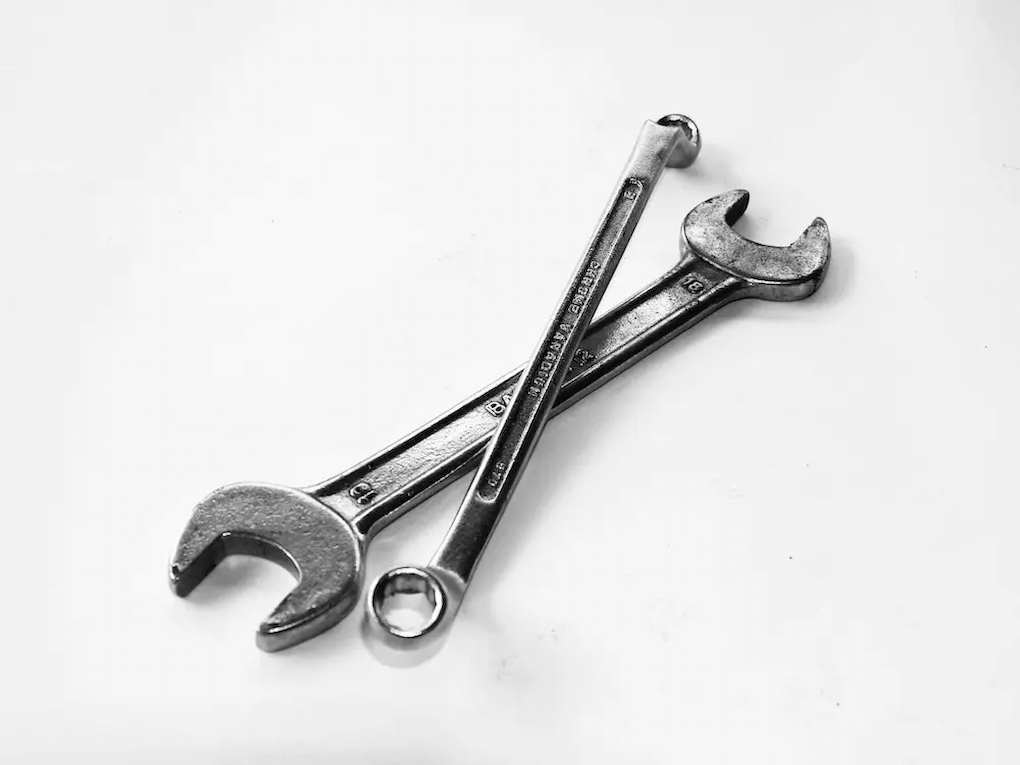Why this is the best employee engagement survey for scaling up
I love the Gallup Q12 survey. It’s a fantastic metric for measuring team member engagement. 12 questions in a pyramid that measure the most important elements of employee engagement. Wherever I’ve been MD, I’ve used it. It helped me scale two UK companies from zero revenue to over £25 million in five years.
If you’re looking to grow your company, you need to know where you’re at and where you’re heading every day. How can you do that without regular, systematic measurement?
As a business coach, I speak at events and it amazes me that the majority of CEOs in the room have no handle on employee engagement. That’s crazy! Numerous studies have shown a direct link between high employee engagement levels and business results. Engaged employees believe in the purpose of the firm and give you up to 40% of additional effort.
At a macro level, Gallup is saying that 87% of the UK workforce is not engaged. That’s phenomenal. Most people are going through their working life on autopilot. What a waste of an existence! I feel so passionately about this. The kick I get out of coaching is I can see how much faster everything happens when you have an engaged workforce. And it’s much more fun – for me and my clients! Who wouldn’t want to have a best friend at work?
The Gallup Q12 Employee Engagement Survey aims to identify the 12 elements of good management. Gallup can run it for you, or you can manage it yourself. It gives you information about where you need to focus your effort and it’s invaluable for building high-performing teams and positive, productive working environments. So, what are the Gallup survey questions that give you this insight into employee engagement?
Q1 – Do you know what is expected of you at work?
A simple question but wow, can this tell you a lot. Gallup’s benchmarks require you to get 75% of all staff giving this 5 out of 5 to be in their top quartile of firms they study. And if you don’t? You need to bring in OKRs to give your teams quantitative clarity on what a good day is, what to measure, and what is expected each day.
It may seem counter-intuitive that OKRs drive employee engagement, but without them, how can anyone know what is expected? You want all your staff to get to the end of their day and know they’ve done well. To do this, it needs to be clear what game they’re playing, what rules they’re following and where the white lines are on the field. Then they need the score in real-time. It’s amazing the difference this can make in their productivity and engagement.
Time and again I see the power of this. Whether it’s hours on the phone for salespeople or time recorded against tickets for engineers on the support desk, ensure all staff have real-time information on how well they’re doing. They need to know what a good day looks like. It’s so motivating. This can change behaviours overnight. People who are doing good work are recognised. Those who don’t have to either step up or get out. If you don’t have them already, introduce daily huddles for all your employees where team members discuss their commitments for the day. Doing this in public is powerful. It gives greater accountability and responsibility. We see this in our lives outside work. Its easier to train or lose weight with an accountability partner.
Q2 – Do you have the materials and equipment you need to do your work right?

How many times have I been in offices where people are surrounded by broken stuff and dodgy ways of doing things? It’s amazing the levels of complacency I’ve seen around materials and equipment. You can build a whole system around this Gallup question. Think broken windows and how this philosophy was used to turn the wave of crime in NY.
When I’ve been a judge in awards programmes, I’ve sensed this from my experience of a firm’s reception area; broken lights, wobbly chairs, out of date press clippings and pervasive lack of care. I can sense the employee engagement levels by sniffing the air or listening for the buzz, or absence of a buzz.
At Rackspace and Peer 1, we’d go out of our way to remove little annoyances and irritations that drain energy and engagement. New members of staff were given a little black book. We told them we valued their fresh perspective and asked them to write down anything, no matter how small, that seemed odd or stupid. I would review these notes, each month, during lunch with every employee of fewer than six months’ tenure. We also had an open email address (stupidrules@) and gave a £10 Amazon voucher to anyone who flagged up stupid rules or suggested a way we could improve. And we acted and gave feedback publicly on all of these.
I remember when I arrived at Pipex, there were 12 people with a shared inbox to manage tickets. As the emails flooded in, the team was incapable of dealing with them all. At the end of the month, that inbox was full of thousands of unread emails. The team would wait until the last day of the month and do a ‘reply all’ for all unread emails. What did it say? ‘I hope we’ve been able to help you, but if you haven’t heard from us, please reply to this email.’ That’s terrible! Within three months of introducing a new ticketing system, we took that team of 12 down to 3. And every email was answered and dealt with! There is often a connection between great customer experience and great employee engagement. In fact, the team set great store on how they perceive the organisation values its relationships with clients. The financial implication is set out in Practice What You Preach!: What Managers Must Do to Create a High-achievement Culture by David H. Maister.
Q3 – At work, do you have the opportunity to do what you do best every day?
This is an important question from the Gallups Q12 survey and is also where another Gallup tool comes in handy – Gallup’s StrengthsFinder. It doesn’t concentrate on things people are good at, but rather the things that give them energy. Activities that motivate and give them joy. This can help you get the right people on the bus, in the right seats. Whatever the job is, there’s likely to be someone in your organisation for whom it’s a strength. If you give work to people who enjoy it, it gets done better.
Your managers need to be aware of this. One way is to get employees to keep diaries. Over the space of a few months, ask them to set their phones to beep every 15 minutes or so. Get them to write down whether they’re enjoying what they’re doing. You’ll see their loves and their loathes. In the team, there should be enough difference between staff to share these. If not, then put together the collective loathes and hire someone who loves to do this stuff to do their best every day. It’s amazing the results in employee engagement that you get out of Gallup’s StrenthsFinder. Now, you’ll have a high-performing team!
Q4 – In the last seven days, have you received recognition or praise for doing good work?

In the past, some managers have told me they worry that if they praise too often, it will lose its impact. Total bollox! I have never worked in or visited a workplace where team members complained of being over-praised by their supervisor or someone else. I guess if that happens, you could recalibrate but, until then, you aren’t doing it enough – by a country mile. With this question, Gallup is saying that regular praise helps your teams learn and grow.
This Gallup question can tell you so much about your managers. Praise and recognition are fundamental to happiness and employee engagement at work. You want to foster a culture of celebration. Honing in on seven days is deliberate – it’s very recent. Employees should instantly recall a moment where their contribution was recognised.
To be in the top quartile nationally, you need more than half of all your employees to rate this 5 out of 5. I recommend you have an ‘all-hands’ meeting every month where you shared financial information and ask each of the managers to say three positive things. Ensure they’re briefed to catch people doing the right thing and call this out, giving awards wherever possible. Recognition and praise need to become an automatic part of the rhythm of your business.
At a granular level, weekly one-on-ones work really well. Here, supervisors or someone has the opportunity to praise team members in private.
Q5 – Does your supervisor seem to care about you as a person?
Man! Bringing humanity into work! We spend a third of our lives working. If your staff think nobody cares about them at their workplace, that’s heartbreaking. We’ve all worked in toxic environments where it’s not the norm, and it makes for a miserable existence with very low levels of employee engagement and no discretionary effort.
Again, this question from the Gallup Q12 employee engagement survey will tell you a lot about your managers. It’s their responsibility to ensure staff feel valued and listened to every day.
Q6 – Is there someone at work who encourages your development?
Your managers should be coaches. If you get a low score on this Gallup question, it will tell you where you need to focus. As well as looking at management, you could also roll out a peer coaching programme – these can turn things around quickly. It costs nothing and doesn’t need specific rules or training. Every member of staff can pick someone at work as their mentor, agreeing on how often to meet. Coaching relationships shouldn’t last more than six months. This can be fabulous for an organisation. There is always someone at work who can coach you to drive performance and achieve your objectives.
Q7 – At work, do your opinions seem to count?
You really want your employees to be saying yes to this Q12 survey question. It comes back to daily huddles and weekly meetings with the team. Regular opportunities to have conversations with the manager about daily stucks and challenges. If your employees have opinions on something, they need to feel like they’re being heard by someone at work.
You must have worked somewhere where your opinion didn’t count? Someone told you that this is just the way it gets done around here. What impact did that have on your employee engagement?
When I’m coaching leadership teams, I tell them to talk to at least one employee outside of their team every week as well as a customer. Say there’s six of you in the SLT. It means every time you get together to discuss progress in the business, you’ll be able to share six conversations with employees and six with customers – a much more informed SLT meeting! If an incident happens, you’ll have a pulse on employee engagement and customer impact. It’s impossible to think that staff wouldn’t feel heard in this situation as this six-person SLT will have had over 300 conversations with employees outside of their teams in a year.
Q8 – Does the mission/purpose of your company make you feel your job is important?
Well, if it doesn’t, you’ve done a cr*p job of defining your purpose! It’s a fact that now, more than ever, people are yearning for a higher sense of purpose – of shared values and meaning in their working existence. They want to make their lives count for something. So, as CEO, you need to be thinking ‘How do we create a great place to work?’. And part of that is saying, ‘How do we make work meaningful’? What is our purpose?’
From all of the Gallup employee engagement survey questions, this one is a great sanity check for management. It’s a good test to see if your company purpose still resonates.
I recently worked with a CEO who was clear about his company’s purpose and what it stood for. But his leadership team had lost sight of it. You could guarantee that if they didn’t know it, then there was no hope for the rest of his employees. We didn’t need to change the purpose itself but we worked on better communication and this had an immediate impact on employee engagement.
Q9 – Are your fellow employees committed to doing quality work?
‘A Players’ hate working with ‘B and C Players’ – fact! And this question will tell you if there’s a problem with performance. The top performers are looking for colleagues who do good work.
The beauty of the Gallup Q12 employee engagement survey is you’ll get a sense of this team by team, manager by manager. You’ll know which teams aren’t committed to doing quality work. There’s nothing more demotivating than feeling you’re working harder or better than someone else but getting paid the same. Even worse, less. We can leave the gender pay gap for another article on employee engagement.
This Gallup question will give you the data to take action. Introduce OKRs so that everyone knows what’s expected and root out poor performers. If you don’t, your business will be mired in mediocrity.
Q10 – Do you have a best friend at work?
This is one of the more intriguing questions in the Gallup Q12 survey! It’s based on research showing a concrete link between having a best friend in the workplace and high-performing teams. This can cause some hilarity when you roll it out. But it makes sense. If your employees feel there’s someone they can turn to, who has their back, they’re more likely to feel secure and happy.
I often wonder whether Gallup has looked into whether remote working versus office working makes a difference to this. To my mind, there’s no substitute for face-to-face. In the past, people have stayed longer than they needed to in my teams because they were genuine friends. It’s so worth the effort. Encourage your employees to spend time with each other, both in and out of the workplace. It will pay dividends for productivity and employee engagement. I’m also a big fan of moving staff around different desks and departments to widen social networks.
Q11 – In the last six months, has someone at work talked to you about your progress?
This is all about the rhythms in your company. Annual appraisal systems are not worth the effort and aggro they create. Bin them! Instead, introduce a daily, weekly, monthly and quarterly rhythm that gives regular opportunities for open and honest feedback. Do this, and you should be able to get 100% of your organisation saying yes to this question. To be in the top quartile, it only needs to be above 60%.
In his latest book, Nine Lies About Work: A Freethinking Leader’s Guide to the Real World, Marcus Buckingham says that the best timescale for a check-in with a team leader or a manager to review quality work is weekly. This was more impactful than every two weeks or monthly. More than six weeks and he found the impact was negative rather than positive on employee engagement.
Q12 – In the last year, have you had opportunities to learn and grow?
The last one of the questions will speak volumes about your managers. Does it feel like a low bar to you? In the last year? Wouldn’t you expect this to be 100% of all employees had had the chance to learn and grow? As I said in Q6, managers should be coaches. Instead of directing people, they should be motivating, supporting, encouraging and rewarding in every one of their interactions. This unlocks potential in teams like nothing else, increasing employee engagement and productivity. My view is that someone shouldn’t be promoted to management unless they can show they’re up to being an effective coach. It’s a fundamental part of their role.
So there it is. The Gallup employee engagement survey is a brilliant tool ready and waiting for you to pick up! By the end of the Gallup survey process, you’ll have a score for every one of your managers. This means you can take action to ensure you have A Players in place in every seat – remember 85% of employee engagement is driven by the team leader or the manager. You will have a corporate-wide employee engagement score, and the pyramid nature of the tool will help you prioritise the next actions.
If you’ve got an employee retention issue, you can bet it’s driven by poor management and this will enable you to root it out. You’ll also get to see where the pockets of best practice exist in your organisation. Find these, and you can share them. Learning from each other is a key part of scaling up.

